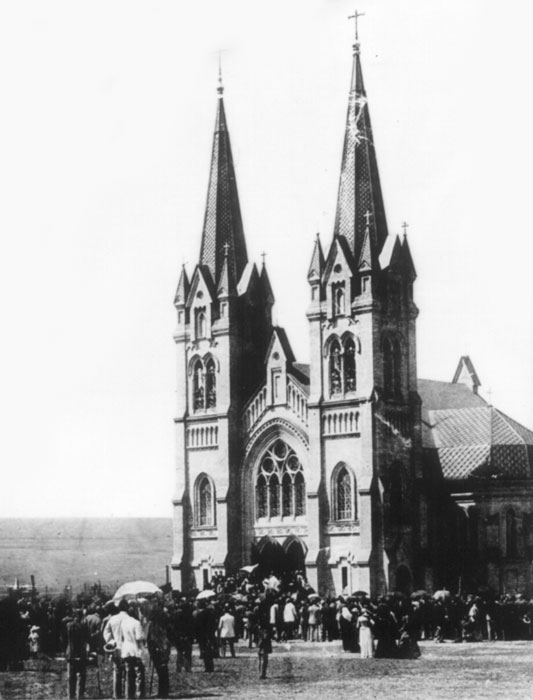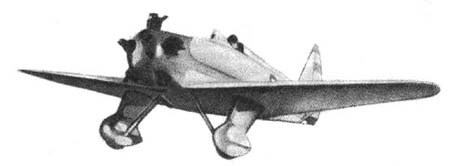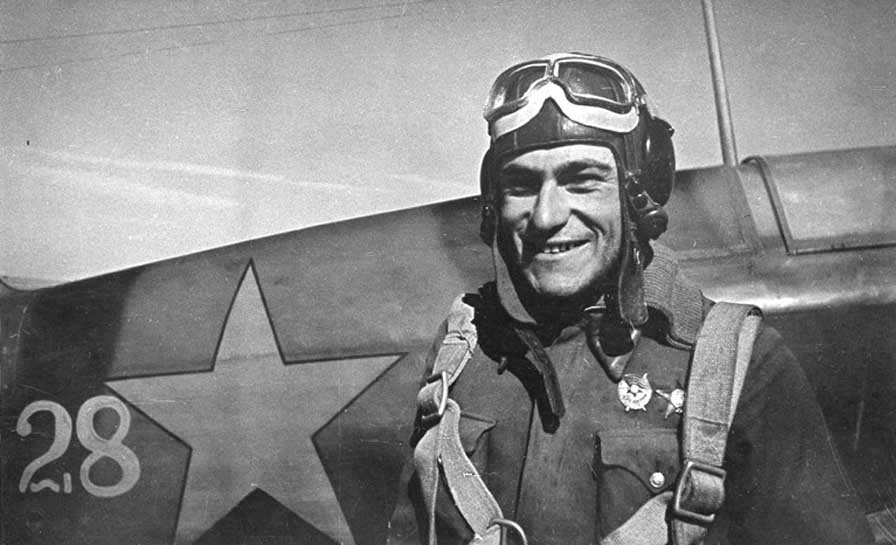|
Vladimir Lavrinenkov
Vladimir Dmitrievich Lavrinenkov (; 17 May 1919 – 14 January 1988) was a fighter pilot in the Soviet Air Forces who became a flying ace during the Second World War and was twice awarded the title Hero of the Soviet Union for being one of the top flying aces in the Soviet Union. Early life Lavrinenkov was born on 17 May 1919 in the village of Ptakhino, at the time located within the Smolensky Uyezd of the Smolensk Governorate of the Russian SFSR before the formation of the Soviet Union. After completing his seventh year of secondary education on Peresna he attended a trade school in the city of Smolensk. Upon graduating from the trade school in 1935 he was employed at a local aircraft factory, and in 1939 he completed training at the Smolensk aeroclub before he entered the military in February 1940. After he graduated from the Chuguev Military Aviation School of Pilots in January the next year he served as a flight instructor at the Chernigov Military Aviation Pilot School, wh ... [...More Info...] [...Related Items...] OR: [Wikipedia] [Google] [Baidu] |
Pochinkovsky District, Smolensk Oblast
Pochinkovsky District () is an administrativeResolution #261 and municipalLaw #132-z district (raion), one of the administrative divisions of Smolensk Oblast, twenty-five in Smolensk Oblast, Russia. It is located in the southern central part of the oblast and borders with Kardymovsky District in the north, Glinkovsky District in the northeast, Yelninsky District in the east, Roslavlsky District in the southeast, Shumyachsky District in the south, Khislavichsky District in the southwest, Monastyrshchinsky District in the west, and with Smolensky District, Smolensk Oblast, Smolensky District in the northwest. The area of the district is . Its administrative center is the types of inhabited localities in Russia, town of Pochinok, Pochinkovsky District, Smolensk Oblast, Pochinok. Population: 30,959 (Russian Census (2010), 2010 Census); The population of Pochinok accounts for 28.3% of the district's total population. Geography The whole area of the district belongs to the drainage bas ... [...More Info...] [...Related Items...] OR: [Wikipedia] [Google] [Baidu] |
Heinkel He 111
The Heinkel He 111 is a German airliner and medium bomber designed by Siegfried and Walter Günter at Heinkel Flugzeugwerke in 1934. Through development, it was described as a wolf in sheep's clothing. Due to restrictions placed on Germany after the First World War prohibiting bombers, it was presented solely as a civil airliner, although from conception the design was intended to provide the nascent Luftwaffe with a heavy bomber. Perhaps the best-recognised German bomber of World War II due to the distinctive, extensively glazed "greenhouse" nose of the later versions, the Heinkel He 111 was the most numerous Luftwaffe bomber during the early stages of the war. It fared well until it met serious fighter opposition during the Battle of Britain, when its defensive armament was found to be inadequate. As the war progressed, the He 111 was used in a wide variety of roles on every front in the European theatre. It was used as a strategic bomber during the Battle of Britain, a to ... [...More Info...] [...Related Items...] OR: [Wikipedia] [Google] [Baidu] |
Arkady Kovachevich
Arkady Fyodorovich Kovachevich (; 3 May 1919 28 November 2010) was a Soviet flying ace and regimental commander during World War II who went on to become a general-lieutenant. Early life Kovachevich was born on 3 May 1919 to a Ukrainian working-class family in Chernogoriya. Before being drafted into the Red Army in 1937 he attended technical school in Kirovgrad, where he trained an aeroclub. After graduating from the Odessa Military Aviation School of Pilots in 1938 he was assigned to the 27th Fighter Aviation Regiment; there he quickly mastered MiG-3 and received a promotion to flight commander. World War II Immediately upon the German invasion of the Soviet Union, Kovachevich and the rest of his regiment began flying sorties to defend the Moscow region. On 11 October 1941 he shot down his first enemy aircraft, a Bf 109, after which he quickly increased his tally of aerial victories. Having participated in the battle for Moscow, he went on to fly the La-5 in the Battle for Sta ... [...More Info...] [...Related Items...] OR: [Wikipedia] [Google] [Baidu] |
Bell P-39 Airacobra
The Bell P-39 Airacobra is a fighter produced by Bell Aircraft for the United States Army Air Forces during World War II. It was one of the principal American fighters in service when the United States entered combat. The P-39 was used by the Soviet Air Force, which used it to score the highest number of kills attributed to any US fighter type flown by any air force in any conflict. Other major users of the type included the Free French, the Royal Air Force, and the Italian Co-Belligerent Air Force.Gunston 1980, p. 22. The P-39 had an unusual layout, with the engine installed in the center fuselage, behind the pilot, and driving a tractor propeller in the nose with a long shaft. It was also the first fighter fitted with a tricycle undercarriage.Angelucci and Matricardi 1978, p. 25. Although its mid-engine placement was innovative, the P-39 design was handicapped by the absence of an efficient turbo-supercharger, preventing it from performing high-altitude work. For th ... [...More Info...] [...Related Items...] OR: [Wikipedia] [Google] [Baidu] |
Fyodor Tolbukhin
Fyodor Ivanovich Tolbukhin (; 16 June 1894 – 17 October 1949) was a Soviet Union, Soviet military commander and Marshal of the Soviet Union. He is regarded as one of the finest Soviet generals of World War II. Born into a peasant family in Yaroslavl, Tolbukhin volunteered for the Imperial Russian Army during the First World War and served with distinction. He joined the Red Army in 1918 and fought in the Russian Civil War. After graduating from the Frunze Military Academy, he held a succession of commands, rising to the post of chief of staff of the Transcaucasian Military District by 1938. Tolbukhin rose further through the ranks following the Operation Barbarossa, German invasion of the Soviet Union, and was involved in the Battle of Stalingrad. As commander of the 4th Ukrainian Front, he assisted Rodion Malinovsky in the Battle of the Dnieper, Lower Dnieper and Dnieper–Carpathian offensive, Dnieper–Carpathian offensives. He then contributed to the Soviet drive into t ... [...More Info...] [...Related Items...] OR: [Wikipedia] [Google] [Baidu] |
Shoulder Mark
A shoulder mark, also called a rank slide or slip-on, is a flat cloth sleeve worn on the shoulder strap of a uniform. It may bear rank or other insignia. A shoulder mark should not be confused with a (an elaborate shoulder strap), a (a braided type of shoulder board), or an epaulette, although these terms are often used interchangeably. Australia The newer Auscam uniform design lacks shoulder marks, instead opting for a vertical strap in the middle of the chest region of the uniform. Rank insignia tags are slipped onto this strap. Unlike the older uniform designs, there are slip-ons for every rank in the Australian Defence Force. The older Auscam uniform designs featured shoulder straps, upon which slip-on rank insignia of Commissioned Officers could be affixed, and non-commissioned officers in the Air Force and Navy only. No shoulder-strap slip-ons are available for enlisted members of the army, whereas the other two services had appropriate slip ons, who have rank patc ... [...More Info...] [...Related Items...] OR: [Wikipedia] [Google] [Baidu] |
Vasily Chapayev
Vasily Ivanovich Chapayev (; 5 September 1919) was a Russian soldier and Red Army commander during the Russian Civil War. Biography Chapayev was born into a poor peasant family in a village called , now part of Cheboksary. During World War I, he fought as a non-commissioned officer and was awarded the Cross of St. George three times. In September 1917, he joined the Russian Social Democratic Labour Party (Bolsheviks). In December he was elected commander of the 138 Infantry Regiment by a vote of the regiment's soldiers. He later commanded the 2nd Nikolaev Division and the 25th Rifle Division. Death On 5 September 1919, the divisional headquarters near Lbishchensk (renamed Chapayev in his honour) were ambushed by White Army forces (). The circumstances of Chapayev's death are uncertain and his body was never recovered. The canonical version that the wounded Chapayev drowned when trying to cross the Ural River was particularly popularized by the 1934 '' Chapayev'' (which ... [...More Info...] [...Related Items...] OR: [Wikipedia] [Google] [Baidu] |
Kamianske
Kamianske (, ; ), previously known as Dniprodzerzhynsk from 1936 to 2016, is an industrial city in Dnipropetrovsk Oblast, Ukraine, and a port on the Dnieper, Dnieper River. It serves as the administrative center of Kamianske Raion and Kamianske urban hromada. Population: On 19 May 2016, it was renamed back to its historical name of Kamianske. Along with the city's name change, the city's hydroelectric station was renamed to Middle Dnieper Hydroelectric Station, Middle Dnieper Hydroelectric Power Plant. Besides the hydroelectric station, the city houses a few other industrial enterprises: Prydniprovsky Chemical Plant radioactive dumps, Prydniprovsky Chemical Plant (closed in 1991), Bahley Coke Factory and Dnieper Metallurgical Combine. History The first written evidence of settlement in the territory of Kamianske appeared in 1750. At that time the villages of Romankove and Kamianske, which make up the modern city, formed a part of the Zaporozhian Sich. The city was known as ... [...More Info...] [...Related Items...] OR: [Wikipedia] [Google] [Baidu] |
Yekaterina Budanova
Yekaterina Vasilyevna Budanova (), nicknamed Katya (Катя) (6 December 1916 – 19 July 1943), was a fighter pilot in the Soviet Air Force during World War II. Usually credited with five or more aerial victories,Jackson 2003, p. 57. along with Lydia Litvyak, she is often considered one of the world's two female fighter aces. She was shot down by either Luftwaffe ace Georg Schwientek of ''JG 52'' or ace Emil Bitsch, of ''JG 3''. Early life Budanova was born into a peasant family in Konoplanka village in Smolensk Governorate. After leaving elementary school with the highest grades, she had to abandon her studies due to her father's death, and began working as a nanny. At the age of thirteen her mother sent her to join her sister in Moscow, where she began working as a carpenter in an aircraft factory.Milanetti, p. 126. It was there that she began an interest in aviation, and she joined an aeroclub's parachutist section, obtaining her flying license in 1934 and graduating to f ... [...More Info...] [...Related Items...] OR: [Wikipedia] [Google] [Baidu] |
Yak-1
The Yakovlev Yak-1 () was a Soviet fighter aircraft of World War II. The Yak-1 was a single-seat monoplane with a composite structure and wooden wings; production began in early 1940.Angelucci and Matricardi 1978, p. 239. The Yak-1 was a maneuverable, fast and competitive fighter aircraft. The composite-wooden structure made it easy to maintain and the engine proved to be reliable.Snedden 1997, p. 71. It formed the basis for subsequent developments from the Yakovlev bureau and was the founder of a family of aircraft, with some 43,000 being built.Gunston 1998, p. 88.Ethell 1995, p. 163. As a reward, designer Alexander Yakovlev was awarded the Order of Lenin (Russian: ) (the highest civilian decoration bestowed by the Soviet Union), a 100,000 ruble prize, and a ZIS motor car.Jackson 2003, p. 160.Matricardi 2006, p. 77. Design and development Before the war, Yakovlev was best known for building light sports aircraft. His Yak-4 light bomber impressed the Soviet government enou ... [...More Info...] [...Related Items...] OR: [Wikipedia] [Google] [Baidu] |
Ivan Grigorevich Borisov
Ivan Grigorevich Borisov (; 28 September 1921 – 10 August 1954) was a pilot in the Soviet Air Force who became a flying ace and served as the wingman to Amet-khan Sultan while in the prestigious 9th Guards Fighter Aviation Regiment during the Second World War. Early life Borisov was born on 28 September 1921 in the village of Shelukhino in the Moscow area to a Russian family. After completing seven grades of school in 1937 he started working at a local tool factory. He graduated from the Moscow Oktyabrsky flight club in 1939, and from May to December 1940 he attended the Chkalov Central Aeroclub in Tushino, after which he entered the Soviet military. Military career Upon entering the military in December 1940 Borisov trained at the Ostafyevsky school of pilots until early summer 1941 when the German invasion of the Soviet Union began; he was immediately deployed to the front as a sergeant in the 309th Fighter Aviation Regiment, which was an air-defense regiment assigned to p ... [...More Info...] [...Related Items...] OR: [Wikipedia] [Google] [Baidu] |
Amet-khan Sultan
Amet-khan Sultan ( Crimean Tatar: Amet-Han Sultan, Амет-Хан Султан, احمدخان سلطان; Ukrainian/Russian: Амет-Хан Султан; 20 October 1920 – 1 February 1971) was a highly decorated Crimean Tatar flying ace in the Soviet Air Force with 30 personal and 19 shared kills who was twice awarded the title Hero of the Soviet Union. Despite having been able to avoid deportation to Uzbekistan when the entire Crimean Tatar nation was repressed in 1944 due to his father's Lak background, he refused to change his passport nationality listing to Lak or identify as one throughout his entire life despite pressure from government organs. After the end of the war, he worked as a test pilot at the Flight Research Institute in Zhukovsky and mastered piloting 96 different aircraft types before he was killed in a crash while testing a new engine on a modified Tupolev Tu-16 bomber. He remains memorialized throughout Ukraine and Russia, with streets, schools, and air ... [...More Info...] [...Related Items...] OR: [Wikipedia] [Google] [Baidu] |






